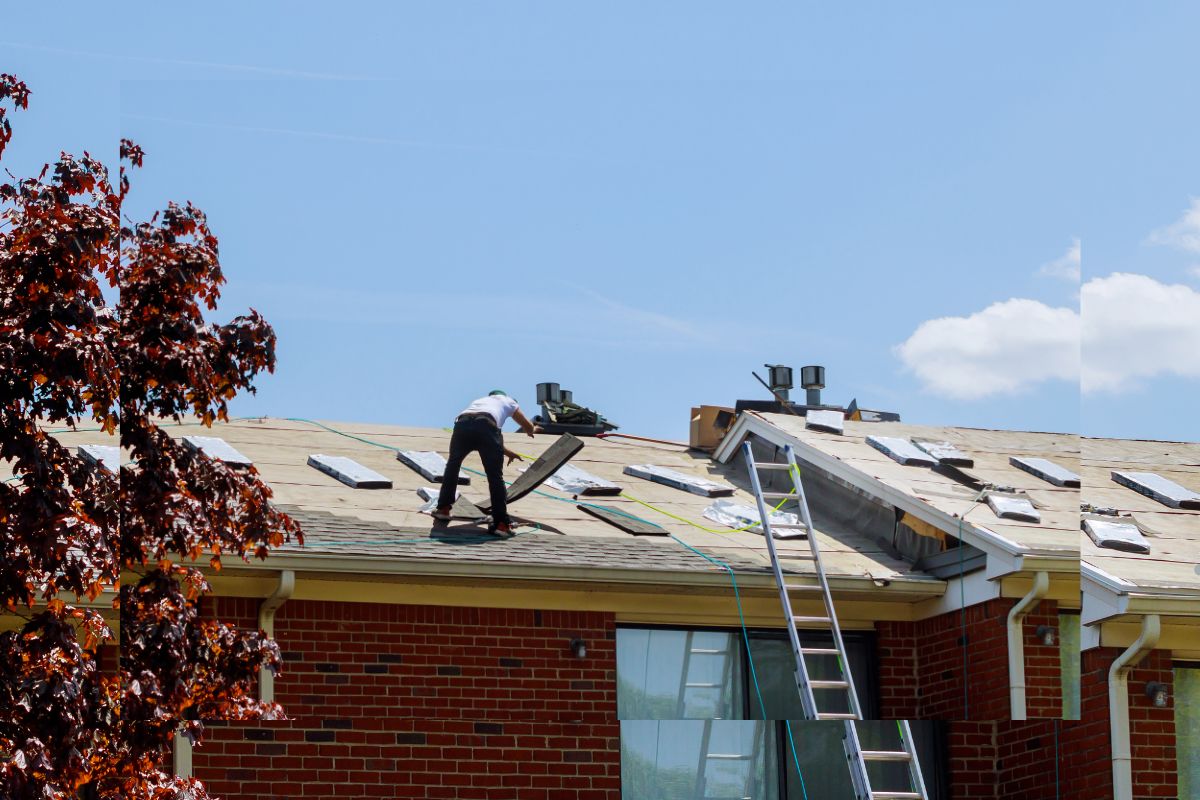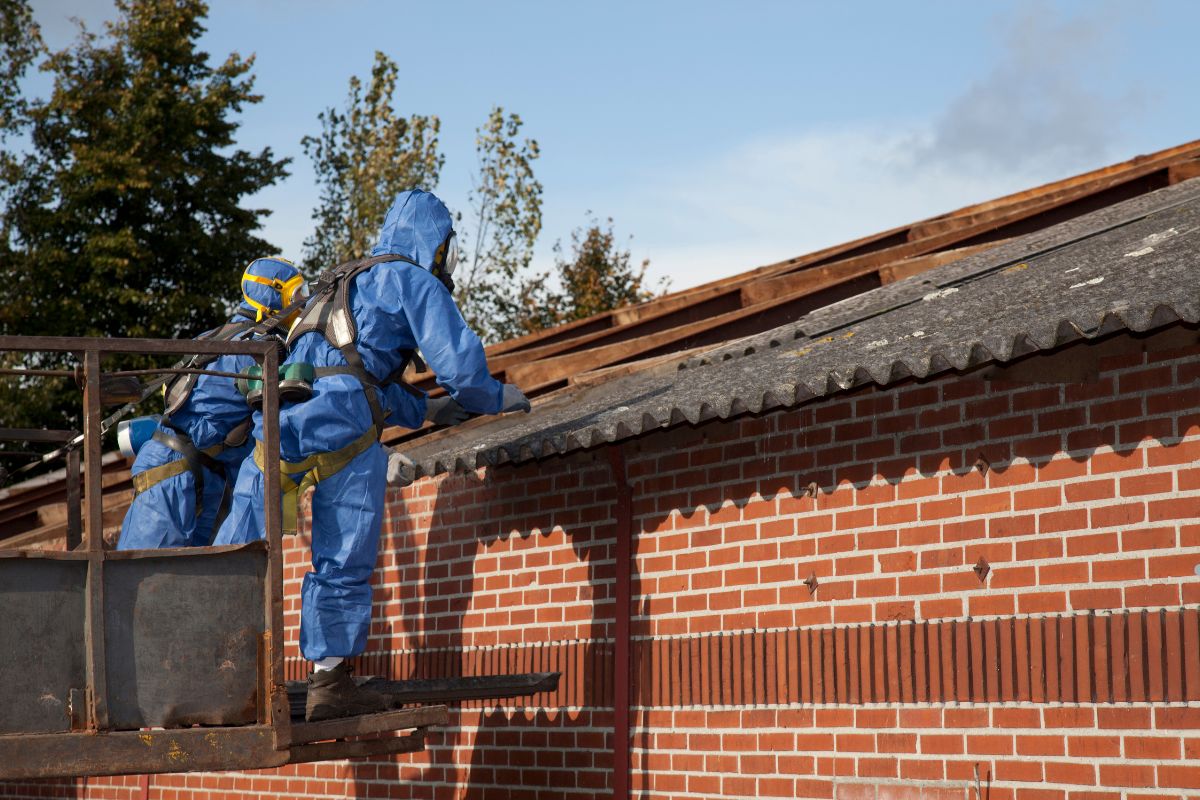
Is your roof covered in unsightly green or black stains? The best roof algae remover depends on factors like the type of algae, your roof material, and your comfort level with DIY solutions. This comprehensive guide will explore the causes of roof algae, different removal methods (DIY and professional), and preventive measures to keep your roof looking its best. Let’s dive in!
Why is My Roof Green? Understanding Roof Algae
The green or black stains on your roof aren’t just dirt—they’re probably algae, particularly Gloeocapsa Magma. This type of algae flourishes in humid, shaded conditions and feeds on the limestone filler found in many asphalt shingles. As it spreads, it leaves dark streaks that can hurt your home’s curb appeal. Even more concerning, if left unchecked, algae can trap moisture and gradually damage your roof, leading to a reduced lifespan. Our professional roof cleaning service can effectively remove algae and prevent further damage, restoring your roof’s appearance and longevity.
Types of Algae and Other Roof Stains

While Gloeocapsa Magma is the most common culprit, other organisms like moss and lichen can also colonize roofs. Moss appears as a thick, green growth, while lichen is a crusty, often grayish-green organism. It’s crucial to identify the specific stain type because removal methods can differ. This article focuses primarily on algae removal, but many of the techniques discussed can also be effective against other types of organic growth.
Should You DIY or Hire a Pro for Roof Algae Removal?
Deciding whether to tackle roof algae removal yourself or hire a professional involves weighing several factors:
- Cost Considerations: DIY solutions are generally cheaper upfront, but you’ll need to purchase cleaning products and equipment. Professional services have a higher initial cost but include labor, expertise, and specialized equipment.
- Safety Precautions: Roof cleaning can be dangerous. Walking on a roof, especially when wet, poses a significant risk of falls. Professionals have the necessary safety equipment and training to minimize these risks.
- Effectiveness Comparison: Professional roof cleaners often use specialized equipment and techniques that may be more effective than DIY methods, especially for stubborn algae growth. They also know how to prevent damage to your roofing materials.
If you’re comfortable working at heights and have the necessary safety equipment, DIY cleaning may be an option. However, if you’re unsure or have a steep or complex roof, hiring a professional is often the best choice. If you hire a professional for the best service.
Top Roof Algae Removers: Products and Methods
Several products and methods can effectively remove roof algae:
- Bleach Solutions: A mixture of bleach and water (typically a 50/50 solution) is a common and effective DIY cleaner. However, bleach can damage plants and should be used with caution.
- Zinc Sulfate/Strips: Zinc sulfate is a natural algaecide that can be applied as a solution or installed as strips along the roof ridge. As rainwater flows over the zinc, it releases ions that inhibit algae growth.
- Commercial Roof Cleaners: Many commercial roof cleaners are specifically formulated to remove algae without damaging roofing materials. These products often contain ingredients like sodium hypochlorite or quaternary ammonium compounds.
- Eco-Friendly Options: Some environmentally-friendly roof cleaners use enzymes or other natural ingredients to break down algae. While these options are gentler on the environment, they may need to be applied more often. Call us today to find the best solution for your roof!
How to Safely Remove Roof Algae: A DIY Guide

If you choose to tackle roof algae removal yourself, follow these steps carefully:
- Preparation and Safety Gear: Wear appropriate safety gear, including a non-slip shoes, safety glasses, gloves, and a harness if necessary. Protect plants and landscaping with plastic sheeting.
- Applying the Solution: Apply the cleaning solution using a garden sprayer or pump sprayer. Work in sections and allow the solution to dwell on the roof for 15-20 minutes (or as directed by the product label).
- Rinsing and Clean Up: Thoroughly rinse the roof with clean water. Avoid using a high-pressure washer, as it can damage shingles. Collect any runoff to prevent it from harming plants or entering waterways.
Remember to always prioritize safety and follow the product manufacturer’s instructions.
Preventing Roof Algae: Long-Term Solutions
Preventing algae growth is easier than removing it. Consider these long-term solutions:
- Zinc Strips: Install zinc strips along the roof ridge. As rainwater flows over the zinc, it will inhibit algae growth.
- Regular Cleaning: Schedule regular roof inspections and cleanings to prevent algae from establishing itself.
- Tree Trimming: Trim any trees that hang over your roof to reduce excessive shade and allow more sunlight to reach your roof. This simple step can help prevent the growth of algae and moss, promoting a healthier, longer-lasting roof. For professional tree trimming and roof maintenance services, call us today!
FAQs About Roof Algae Removal
Will roof algae damage my roof?
Yes, if left untreated, roof algae can trap moisture and potentially shorten your roof’s lifespan.
Is it safe to walk on my roof to clean it?
Walking on a roof can be dangerous, especially when wet. If you’re not comfortable or don’t have the necessary safety equipment, hire a professional.
How often should I clean my roof?
The frequency of roof cleaning depends on your climate and the amount of shade your roof receives. In general, aim to clean your roof every 1-3 years.
Can I use a pressure washer to clean my roof?
Avoid using a high-pressure washer, as it can damage shingles.
Are there eco-friendly roof cleaning options?
Yes, some eco-friendly roof cleaners use enzymes or other natural ingredients to break down algae.
Keeping Your Roof Clean and Healthy
Keeping your roof clean and in good condition is crucial for protecting your home and enhancing its curb appeal. By understanding the causes of roof algae, selecting the right removal method, and taking preventative steps, you can ensure your roof remains in top shape for years to come. Contact us today to learn more!
